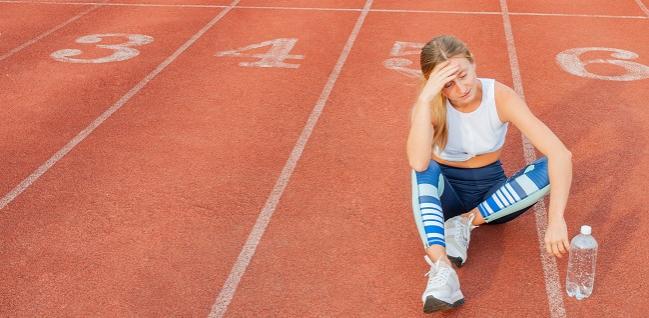High-Intensity Sport Post-COVID: Expert Advice From Sports Cardiologists
Schools, teams, competitive athletes, and dedicated amateurs are starting to ask clinicians how they can get back in the game.

American College of Cardiology’s Sports and Exercise Cardiology Council members Dermot Phelan, MD, PhD (Sanger Heart and Vascular Institute, Atrium Health, Charlotte, NC), Jonathan H. Kim, MD (Emory University School of Medicine, Atlanta, GA), and Eugene H. Chung, MD (University of Michigan, Ann Arbor), with contributions from other sports cardiology experts, developed what they term a “consensus expert opinion clinical framework on return to play in the era of COVID-19.” The document was published this week in JAMA Cardiology.
The writers acknowledge that the evidence base to inform clinical decisions in this area is limited. “Specifically, the prevalence of asymptomatic COVID-19 cases in the community, the prevalence of cardiac injury among nonhospitalized individuals with COVID-19, and long-term outcomes attributable to COVID-19 cardiac injury remain unknown,” they say.
Speaking with TCTMD, Kim said the report’s inspiration came from the fact that in recent weeks he and his colleagues have been getting calls from teams, schools, and organizations that want to anticipate what comes next for their athletes.
Obviously we’re still clearly in the beginning stages of the pandemic and there’s a lot on the front lines that takes precedence, and is more important to be honest, but we know this is going to be with us unfortunately for the foreseeable future. Jonathan H. Kim
Also, he continued, “there are patients that we’ve seen. I have a couple in my clinic; these are recreational athletes who had an infection in March and are wanting to know, ‘Can I go back and train for my marathon?’ Obviously we’re still clearly in the beginning stages of the pandemic and there’s a lot on the front lines that takes precedence, and is more important to be honest, but we know this is going to be with us unfortunately for the foreseeable future.”
Now is the time to raise questions and seek answers, Kim continued. “There’s been growing momentum about having experts in the field start to comment on this. This was the impetus to come up with a timely statement to at least start getting some preliminary recommendations out there.”
Importantly, their framework applies to professional or competitive athletes as well as to highly active individuals such as triathletes or marathon runners, he said. “For the average person out there who is wanting to exercise for health, wanting to comply with the American Heart Association’s standard guidelines for physical activity—this is not meant for that.”
‘Return-to-Play Algorithm’
Cardiovascular manifestations of COVID-19 are most apparent in patients sick enough to be hospitalized, of whom an estimated 20% to 30% show signs of cardiac injury, Kim said. As reported by TCTMD, the range of COVID-19-related conditions goes far beyond severe acute respiratory syndrome: everything from Takotsubo cardiomyopathy to symptoms of Kawasaki disease (in young people), from STEMI mimics to thrombotic disease and stroke, as well as myocarditis and other effects of inflammation on the heart.

What’s unknown, Kim told TCTMD, is the incidence of these complications and their effects in mildly symptomatic and asymptomatic COVID-19 patients. “But when you think about this population, clearly the stakes are quite high. And we know that myocarditis . . . is certainly high up there on the list of sudden cardiac death [causes] in competitive athletes,” he explained.
Until evidence is available, “we’re erring more on the conservative side,” he said, and advice will evolve as knowledge grows. Cardiologists, Kim suggested, should recognize that athletes have unique “challenges and differences.”
The “return-to-play algorithm” first splits patients into two groups: 1) COVID-19 negative and asymptomatic athletes worried about getting sick and 2) patients who tested positive for COVID-19.
Negative/asymptomatic patients have no limitations on exercise but should practice social distancing and monitor for symptoms, the document says. For COVID-19 patients, the framework is tailored to disease severity. At the low end, there are asymptomatic individuals picked up during screening for the disease. People with diagnosed COVID-19 whose severe symptoms sent them to the hospital are at the other end of the spectrum, with mildly symptomatic but unhospitalized patients falling in the middle. Across these categories are suggestions for time off from exercise, testing, resumption of activity, and monitoring.
Phelan, Kim, and Chung stress that their recommendations are meant to aid clinicians but aren’t prescriptive. To better expand the knowledge base, “we emphasize the critical need for widespread antigen testing, the development and dissemination of antibody testing, and ultimately vaccination to prevent disease. These important public health objectives coupled with rigorous surveillance of long-term clinical outcomes among athletes will be required to ensure the safe global resurrection of a thriving sport and athletic industry,” they conclude.
Caitlin E. Cox is News Editor of TCTMD and Associate Director, Editorial Content at the Cardiovascular Research Foundation. She produces the…
Read Full BioSources
Phelan D, Kim JH, Chung EH. A game plan for the resumption of sport and exercise after coronavirus disease 2019 (COVID-19) infection. JAMA Cardiol. 2020;Epub ahead of print.
Disclosures
- Phelan and Chung report no relevant conflicts of interest.
- Kim receives compensation for his role as team cardiologist for the Atlanta Falcons.


Comments